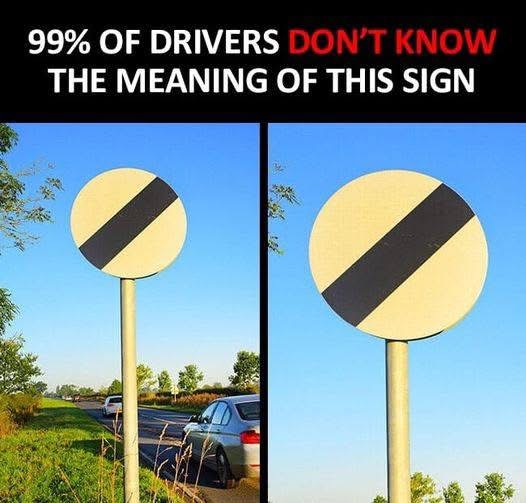A recent post by a UK driver sparked debate online, claiming that “99% of motorists” don’t understand a common road sign seen across the country. The sign — a circular white disc with a thick black diagonal stripe — is often misread, despite being part of the mandatory driving theory test. Many drivers forget its meaning after passing, causing confusion on the roads. Officially, the sign indicates the national speed limit.
From the point it appears, the maximum legal speed depends on the type of road and vehicle. For standard cars on single carriageways, the limit is 60 mph, while dual carriageways and motorways allow up to 70 mph. Vehicles towing trailers or larger vans have lower limits: 50 mph on single carriageways and 60 mph on dual carriageways or motorways. In built-up areas with street lighting, the default speed limit remains 30 mph.
Despite these clear rules, the sign often causes jokes and speculation online. Drivers humorously suggest it means “drive as fast as you want” or dub it a “national drifting zone.” In reality, some motorists misinterpret it as permission to speed, overtaking recklessly or ignoring local conditions. Road safety experts warn that the national speed limit is only the maximum. Conditions like traffic, weather, or road quality may require slower speeds. The RAC and other organizations stress that responsible driving always comes first, regardless of signage.
